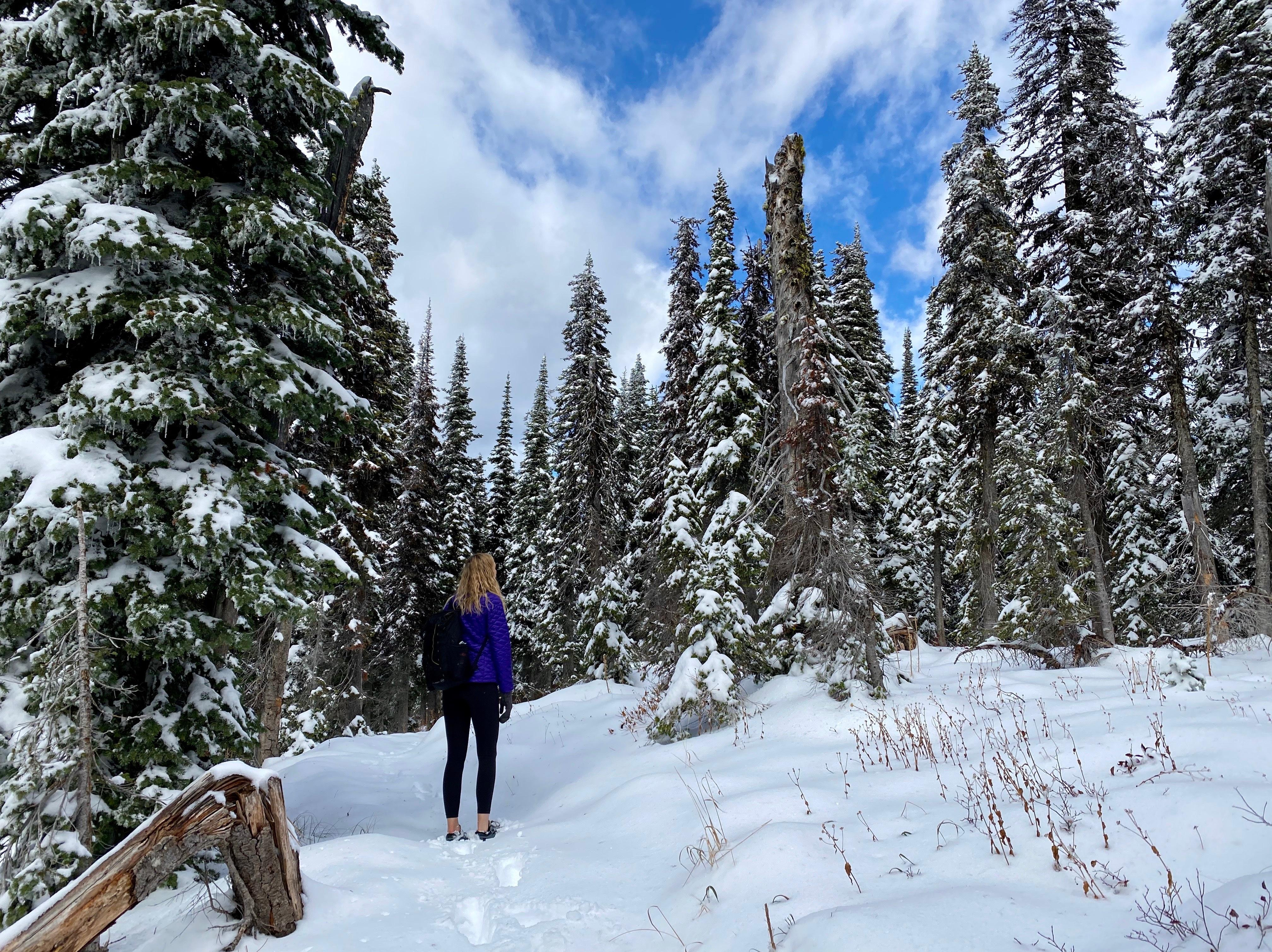Insider Tips for Better Day Hikes

Ever since I was a kid, hiking has always been my outlet. There are few things in life that can beat spending a day on the trails surrounded by good views, and even better company if you aren't up for solo adventuring.
With dozens of national parks under my belt, here are some tips if you're relatively new to hiking or looking to ramp up the length or difficulty of the trails you travel.
1. Pack snacks and plenty of water.
I'm a fan of a lightweight pack, but everyone has different needs regarding how much you want to carry. For most 2-4 hour hikes, this is a perfect size.
When packing fluids, keep in mind that hiking in the mountains with higher elevations puts you at risk for dehydration. In fact, the Wilderness Medical Society notes that "your body loses water through respiration at high altitude twice as fast as it does at sea level." (Source: https://hydrapak.com/blogs/beyond-adventure/high-altitude-hydration)
While it may feel like a pain to carry an extra water bottle or two, the upside is that your pack should get lighter the longer you hike!
2. Always dress in layers.
There's nothing worse than being too hot or too cold without options to change clothes. I'm known to be the queen of jackets and may take this advice a little too seriously, but do yourself a favor and carry a variety of layers or leave room in your pack to remove some as you warm up.
3. Start hiking early, ideally once it's light out for safety.
This is especially important in the summer for most climates in order to beat the heat. If you get moving before the sun rises, use headlamps and be cautious with your footing.
4. Hike with a fully charged phone, and let someone know where you're headed before hitting the trails.
Even better, pack a portable charger and cable to ensure you have enough battery in case of an emergency. Sharing your hiking plans, particularly for longer trails, is always a good idea.
More often than not, you won't have cell phone coverage when hiking in relatively remote locations. This has been the case on nearly every trip I've taken, from Hawaii and Washington to Italy and Iceland.
This is where AllTrails comes in to save the day. The app in general is fantastic and is a must-download for any active traveler. The key selling point for the Pro membership is the ability to download offline trail maps. This is an absolute game changer, but it requires a little preparation by downloading trails you’re considering or have committed to hiking when you have solid cell coverage or Wi-Fi. A typical AllTrails Pro membership is $36 per year, but there are often promotions. This can save a ton of stress and allow you to be more in the moment when exploring the outdoors.
6. Don't forget to pack (and wear) sunscreen, bug spray, sunglasses, and a hat.
It seems like common sense, but these are items that are easily left behind.
7. When hiking multiple trails on the same day, tackle your hardest route first before fatigue sets in.
I'm a huge fan of stacking shorter day hikes into a single day. Whether you are planning to hike 2 or 7 trails in one day, be strategic with how you order them. With that said, logistically this doesn't always make sense if there is a lot of driving involved between different trailheads so use this as a general rule of thumb.
8. Be prepared for rain.
A waterproof jacket, rather than a water-resistant one, can be helpful to have on hand. If you’re wearing quick-dry clothing and the forecast looks promising, I think you can get away without carrying a rain jacket on you. If you have room to throw a rain jacket in a pack, even better. Wearing a rain jacket without rain though is not recommended as they generally lack breathability so it doesn’t take long to overheat.
Bonus tip: Place your electronics in a small roll-top dry sack. It's well worth the $15 to protect your gear in case it rains or water leaks in your pack. Ziploc bags may seem like a fine alternative but can cause your phone to overheat and shut down.
9. In addition to checking the weather forecast, read up on the latest trail conditions.
For most trails, the easiest place to check on the latest conditions is in AllTrails using the Reviews section of the trail you plan to follow.
AllTrails is both an app and website that’s based on user-generated content. You can expect reports on things like the best direction to head on a loop, wildlife sightings, as well dangerous or challenging trail conditions such as ice, snow or mud. These updates will ensure you have the necessary gear, whether that's snowshoes or bear spray.
The home for unique & authentic travel


